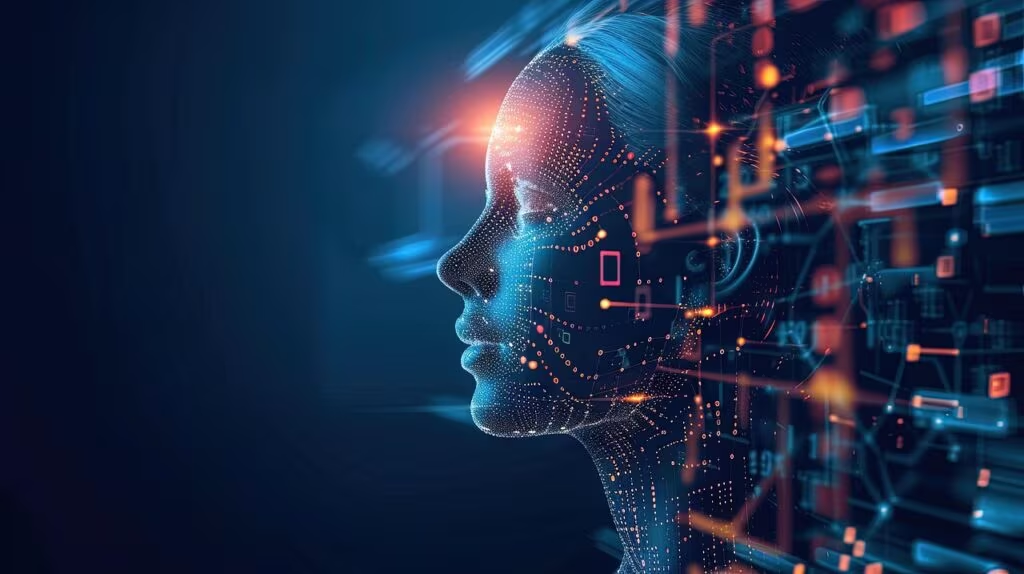The Dawn of Non-Invasive Thought Translation
The ability to decode internal visual experiences—what we see, imagine, or recall—and translate them into written language represents a monumental leap in neuroscience and technology. Researchers at the University of Texas at Austin (UT Austin) have developed a sophisticated brain decoding method that achieves this feat without requiring the subject to speak or even think in words.
This breakthrough technology, often referred to as mind captioning or a semantic decoder, offers a glimpse into a future where communication is possible directly from the neural level, bypassing physical limitations.
The Science Behind the Semantic Decoder
The UT Austin research team, led by Dr. Alexander Huth, leveraged the power of functional Magnetic Resonance Imaging (fMRI) combined with advanced artificial intelligence models to achieve this translation. The core innovation lies in its ability to capture the meaning or semantic content of a thought directly from brain activity patterns.
Mechanism Breakdown
Unlike earlier BCI systems that focused on motor commands or explicit language centers, this method targets the conceptual essence of the visual experience:
- Data Acquisition: Participants lie in an fMRI scanner and are exposed to visual stimuli (such as watching a short film or recalling a memory). The fMRI measures blood flow changes, indicating neural activity in specific brain regions.
- Targeting Non-Linguistic Centers: Crucially, the decoder focuses on activity in the visual cortex and other areas associated with semantic processing and visual representation, rather than relying solely on the traditional language centers (Wernicke’s and Broca’s areas). This allows it to capture the raw, conceptual essence of the visual experience.
- AI Translation: The collected fMRI data is fed into a specialized large language model (LLM) that has been trained to correlate specific brain activity patterns with corresponding semantic concepts and linguistic structures. The AI then generates a natural language description—a “mind caption”—of the visual thought.

Bypassing the Brain’s Language Barrier
The decision to bypass the brain’s explicit language system is what makes this research particularly groundbreaking. Previous attempts at brain decoding often required subjects to internally vocalize or formulate thoughts linguistically, which limited the scope of what could be translated.
By focusing on the visual and semantic processing centers, the UT Austin team demonstrated that the decoder could translate both:
- Perceived Visuals: Accurately describing scenes the participant was actively watching.
- Imagined Visuals: Translating memories or mental images the participant was recalling.
This suggests that the technology is tapping into the fundamental conceptual representation of information in the brain, independent of the final linguistic output. This capability is vital because it means the system is decoding thought, not just internal speech.
“We are essentially decoding the semantic content of the visual experience,” noted the researchers. “It’s not a word-for-word translation of internal monologue, but a reconstruction of the underlying meaning, which is a much deeper level of access.”
Accuracy and Semantic Fidelity
While the technology is still in the research phase, the accuracy demonstrated by the semantic decoder is highly promising. The goal is not perfect transcription, but high semantic fidelity—the ability to capture the intended meaning.
In controlled tests, the decoder was able to correctly identify the meaning of the visual input significantly better than chance. For instance, in one test, the decoder was presented with two possible captions for a visual stimulus and asked to choose the correct one based on the fMRI data. The decoder achieved accuracy rates often exceeding 80% in identifying the correct semantic concept.
Example of Semantic Translation
If a participant watched a clip of a woman driving a car, the decoder might output a reconstruction that captures the core action and subject, even if the exact phrasing differs:
| Stimulus Description (Actual) | Decoder Output (Reconstruction) | Key Semantic Match |
|---|---|---|
| “The woman is driving a red car quickly down the highway.” | “She was in a vehicle speeding on the road.” | Woman, driving, speed, road |
| “I remember the Eiffel Tower at night.” | “A tall structure in Paris lit up after dark.” | Landmark, Paris, night |
This ability to reconstruct the general narrative and key concepts from brain activity marks a critical step toward practical application.

Implications for Medicine and Ethics
The development of non-invasive, non-linguistic thought translation holds immense potential, particularly for medical applications.
Revolutionizing Communication
For patients suffering from Locked-In Syndrome or conditions like advanced Amyotrophic Lateral Sclerosis (ALS), where cognitive function is preserved but physical communication is impossible, this technology could restore a vital link to the outside world. Since the system doesn’t require motor control (like typing or speaking) or even internal verbalization, it offers a new pathway for expressing needs, emotions, and complex thoughts.
Ethical and Privacy Considerations
As with any technology that interfaces directly with the brain, the ethical implications are profound. The ability to decode thoughts, even visual ones, raises immediate concerns about mental privacy and potential misuse. The researchers emphasized that the current technology is non-cooperative—it requires extensive training on individual subjects and the subject must remain still and willing to participate.
Crucially, the decoder cannot simply be applied to an unwilling subject. The accuracy drops significantly if the subject resists or attempts to think about unrelated things. This inherent limitation currently acts as a safeguard against unauthorized “mind reading.”
Key Takeaways
This research marks a significant milestone in Brain-Computer Interface (BCI) development, moving beyond simple commands to complex semantic translation:
- Mind Captioning: The new method translates visual thoughts (perceived or recalled) into text.
- Non-Linguistic Focus: It achieves this by analyzing activity in the visual and semantic processing centers, bypassing the brain’s explicit language areas.
- High Semantic Fidelity: The decoder accurately captures the core meaning of the thought, even if the exact wording is different.
- Potential Applications: Offers a revolutionary communication pathway for patients with severe paralysis or Locked-In Syndrome.
- Current Limitations: The technology is non-invasive (fMRI) but requires extensive individual training and subject cooperation for accurate results.
What’s Next
The next steps for the UT Austin team involve making the technology more portable and less reliant on bulky fMRI machines. Researchers are exploring methods to adapt the semantic decoding principles to more accessible technologies like functional Near-Infrared Spectroscopy (fNIRS) or advanced EEG systems. If successful, this transition would move thought translation from a laboratory curiosity to a practical, real-world communication tool for those who need it most, potentially within the next decade.
Original author: Neuroscience News
Originally published: November 7, 2025
Editorial note: Our team reviewed and enhanced this coverage with AI-assisted tools and human editing to add helpful context while preserving verified facts and quotations from the original source.
We encourage you to consult the publisher above for the complete report and to reach out if you spot inaccuracies or compliance concerns.

